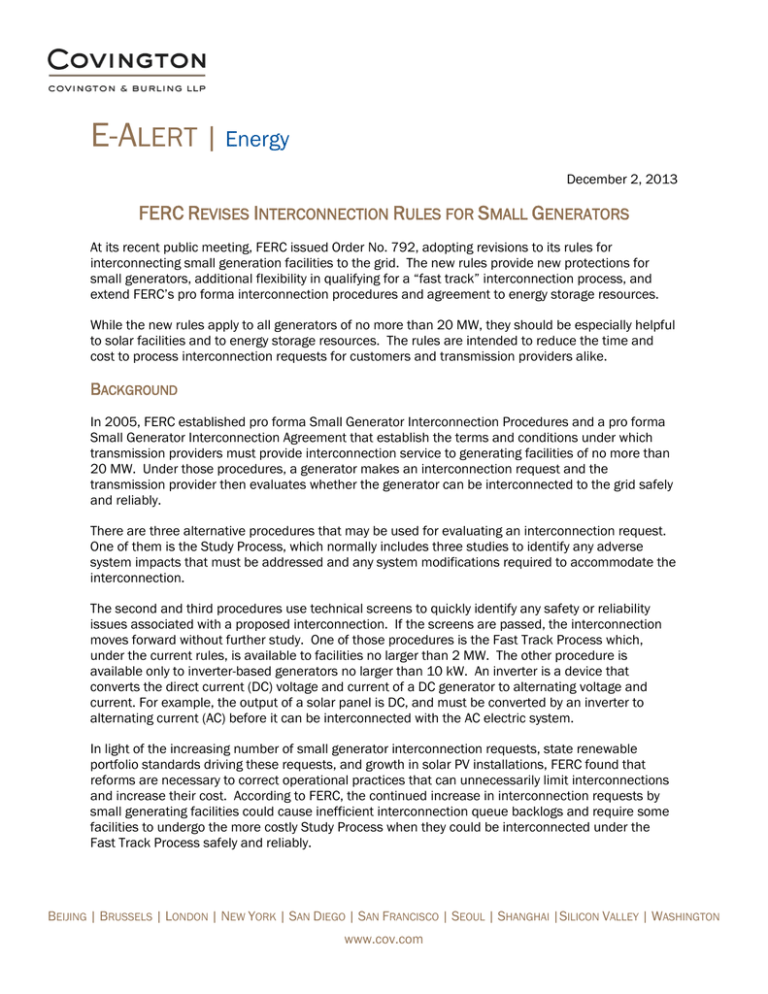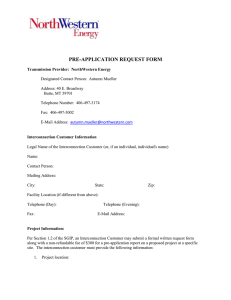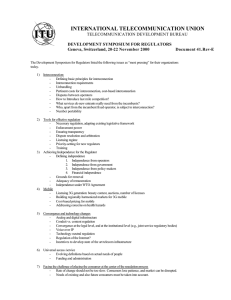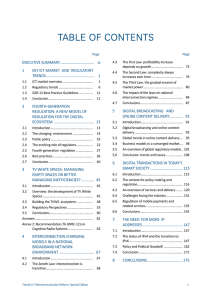
E-ALERT | Energy
December 2, 2013
FERC REVISES INTERCONNECTION RULES FOR SMALL GENERATORS
At its recent public meeting, FERC issued Order No. 792, adopting revisions to its rules for
interconnecting small generation facilities to the grid. The new rules provide new protections for
small generators, additional flexibility in qualifying for a “fast track” interconnection process, and
extend FERC’s pro forma interconnection procedures and agreement to energy storage resources.
While the new rules apply to all generators of no more than 20 MW, they should be especially helpful
to solar facilities and to energy storage resources. The rules are intended to reduce the time and
cost to process interconnection requests for customers and transmission providers alike.
BACKGROUND
In 2005, FERC established pro forma Small Generator Interconnection Procedures and a pro forma
Small Generator Interconnection Agreement that establish the terms and conditions under which
transmission providers must provide interconnection service to generating facilities of no more than
20 MW. Under those procedures, a generator makes an interconnection request and the
transmission provider then evaluates whether the generator can be interconnected to the grid safely
and reliably.
There are three alternative procedures that may be used for evaluating an interconnection request.
One of them is the Study Process, which normally includes three studies to identify any adverse
system impacts that must be addressed and any system modifications required to accommodate the
interconnection.
The second and third procedures use technical screens to quickly identify any safety or reliability
issues associated with a proposed interconnection. If the screens are passed, the interconnection
moves forward without further study. One of those procedures is the Fast Track Process which,
under the current rules, is available to facilities no larger than 2 MW. The other procedure is
available only to inverter-based generators no larger than 10 kW. An inverter is a device that
converts the direct current (DC) voltage and current of a DC generator to alternating voltage and
current. For example, the output of a solar panel is DC, and must be converted by an inverter to
alternating current (AC) before it can be interconnected with the AC electric system.
In light of the increasing number of small generator interconnection requests, state renewable
portfolio standards driving these requests, and growth in solar PV installations, FERC found that
reforms are necessary to correct operational practices that can unnecessarily limit interconnections
and increase their cost. According to FERC, the continued increase in interconnection requests by
small generating facilities could cause inefficient interconnection queue backlogs and require some
facilities to undergo the more costly Study Process when they could be interconnected under the
Fast Track Process safely and reliably.
BEIJING | BRUSSELS | LONDON | NEW YORK | SAN DIEGO | SAN FRANCISCO | SEOUL | SHANGHAI |SILICON VALLEY | WASHINGTON
www.cov.com
COVINGTON & BURLING LLP
INTERCONNECTION RULES REFORMS
Pre-application system conditions reports
Interconnection customers will now have the option of requesting from the transmission provider a
pre-application report that provides readily available information about system conditions at any
possible interconnection point. These reports are expected to help a customer select the best site
for its facility, eliminate uncertainties, and reduce developer costs and schedule delays.
Transmission providers should also benefit because the reports should diminish the practice of
multiple interconnection requests for a single project.
Eligibility for participation in the Fast Track Process
FERC made the following changes regarding eligibility for the Fast Track Process:
The eligibility threshold for inverter-based machines will be based on the capacity of the
generator and the line voltage and location of the interconnection. Specific thresholds are set
out in a chart. Under certain conditions, inverter-based facilities up to 5 MW will be eligible. This
change should allow more solar facilities to use the Fast Track Process.
The eligibility threshold for synchronous and induction machines will remain at 2 MW.
All projects interconnecting to lines greater than 69 kV are no longer eligible for the Fast Track
Process.
Process if the interconnection customer fails the Fast Track eligibility screens
Under the current rules, if an interconnection customer fails the screens for Fast Track eligibility, the
transmission provider must offer to perform a supplemental review, but only if the transmission
provider concludes the review might determine that the facility could qualify for the Fast Track
Process. Under the new rules, the transmission provider must offer to perform a supplemental
review without condition (i.e., at the customer’s discretion) and the review must include three
screens to determine if the small generating facility may be interconnected safely and reliably: 1) a
minimum load screen; (2) a power quality and voltage screen; and (3) a safety and reliability screen.
Customer comments on a facilities study.
In cases where a facilities study must be performed and the study identifies upgrades that are
required, customers will now be allowed to provide written comments on the required upgrades.
FERC observed that this dialogue with the transmission provider will help ensure that
interconnection costs are just and reasonable. However, FERC said the transmission provider
should make the final decision on upgrades required because it is ultimately responsible for the
safety and reliability of its system
Energy storage devices
FERC adopted the following revisions with respect to the interconnection of energy storage devices:
The definition of Small Generating Facility is modified to explicitly include storage devices.
When determining whether a storage device may interconnect and/or qualifies for the Fast Track
Process, the transmission provider should generally use the maximum capacity that the device is
capable of injecting into the system. However, under certain conditions something less than
C&B
2
COVINGTON & BURLING LLP
maximum injection capacity may be used for facilities that combine generation resources with
storage resources (e.g., a storage facility operating to firm a variable energy resource).
A transmission provider may study the effect on its system of the absorption of energy by the
storage device and make determinations based on the outcome of these studies.
Transmission providers must make compliance filings within six months of the rule’s effective date.
The new interconnection rules will be effective 60 days after publication in the Federal Register.
Order No. 792 is available here.
If you have any questions concerning the material discussed in this client alert, please contact the
following members of our energy practice group:
William Massey
Bud Earley
+ 1 202.662.5322
+ 1 202.662.5434
wmassey@cov.com
bearley@cov.com
This information is not intended as legal advice. Readers should seek specific legal advice before acting with regard to the subjects
mentioned herein.
Covington & Burling LLP, an international law firm, provides corporate, litigation and regulatory expertise to enable clients to achieve their
goals. This communication is intended to bring relevant developments to our clients and other interested colleagues. Please send an
email to unsubscribe@cov.com if you do not wish to receive future emails or electronic alerts.
© 2013 Covington & Burling LLP, 1201 Pennsylvania Avenue, NW, Washington, DC 20004-2401. All rights reserved.
C&B
3




